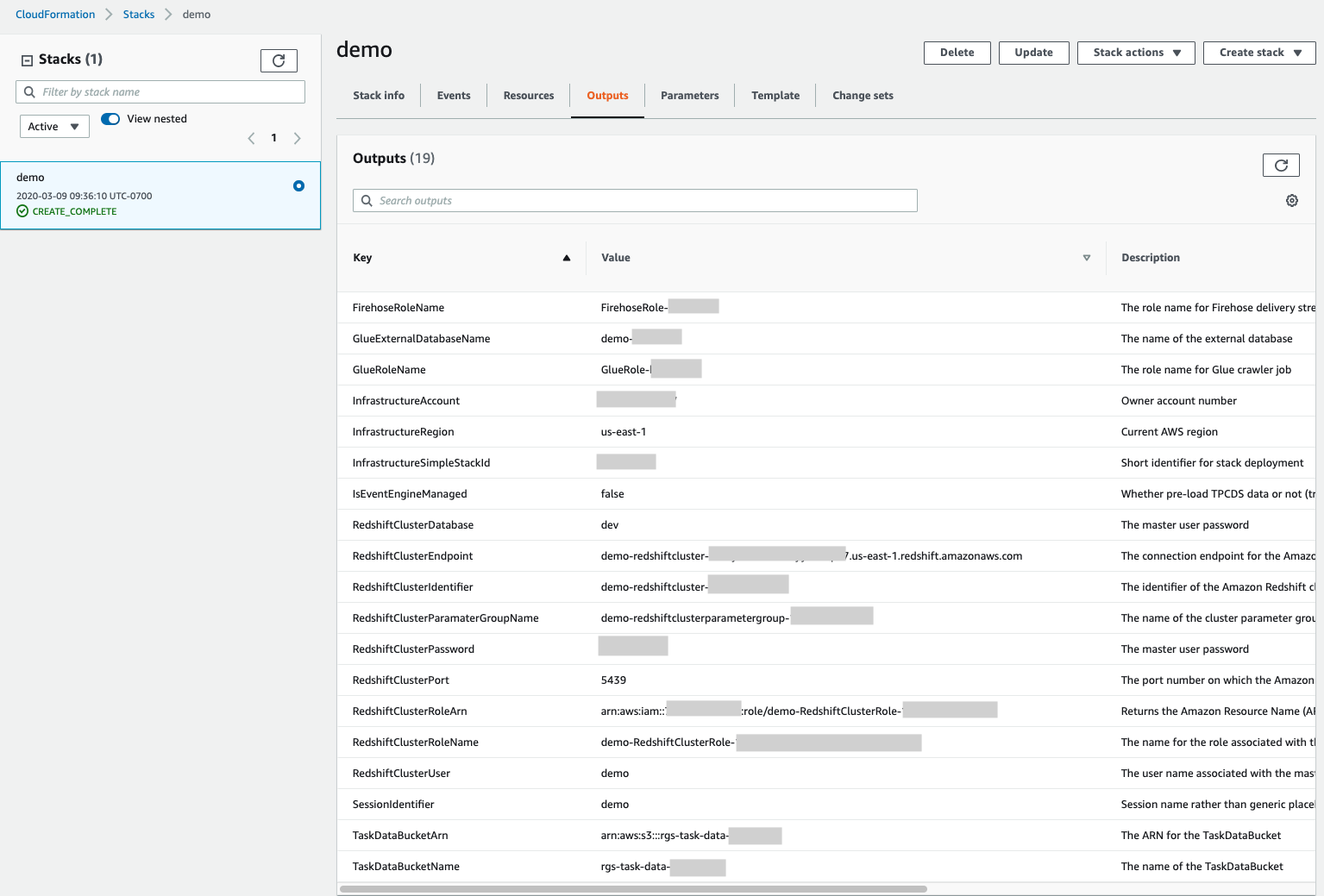Preparing your Demo
Build Demo Environment
Create a stack by using this CFN Template. The stack should be launched in us-east-1 to support the Data Lake features in the demos. Also, consider setting the option to Preserve successfully provisioned resources when deploying, to avoid starting over if any resource fails to deploy.
Before running the CFN Template, please see the FAQ page to avoid potential pitfalls.
The stack will deploy the following services. Consider deleting the stack after you demo is complete to avoid unnecessary costs:
- Dedicated VPC Setup (VPC/Subnet/Gateway/etc.)
- Lambda/Glue Jobs/Workflow (for data loading and triggers)
- Redshift Cluster with 100GB of TPC-DS Data
- SageMaker Notebook Server
- Aurora PostgreSQL DB with sports ticketing data
- AWS Database Migration Instance with source endpoints, Redshift target endpoints, and replication task with full and CDC mode
- EC2 Windows 2019 instance with:
- JDBC drivers for various db engines
- SQL Workbench/J
- MySQL Workbench
- Oracle SQL Developer
- AWS Schema Conversion Tool (SCT)
- Oracle XE database with 10GB of sports ticketing data
- SQL Server database with 10GB of sports ticketing data
- MySQL Server database with 10GB of sports ticketing data
A few of the demos will require the use of Concurrency Scaling. By default internal Isengard accounts have this disabled. If you would like this enabled email internal-redshift-pm@. As a workaround, you can launch this CFN Template using the Event Engine.
Cloud Formation Parameters & Output
The following parameter are included in the CFN Template for you to customize your demo. Upon successful deployment, you should see the following key/value pairs in the Output. You will use these outputs to configure your client tools and they may be referenced in the demos as well.
| Parameters | Output |
|---|---|
|

|
Setup your Client Tools
Based on the demo you’re running, a different client tool may be appropriate. Be sure to follow the client tool setup for your demo.
Ask questions
Understand your customer, their challenges and the project they are planning to undertake. Some questions you can ask are:
- What are the current challenges/scale of data?
- Are you migrating an existing Data Warehouse to Redshift? What defines success for the Migration?
- Who from the team would be involved in the effort and are their roles?
- Who are the key stakeholders?
- Who are the consumers of the Data Warehouse?
- Who will support the application/database after migrating?
- Does the team involved have experience with AWS?
Understand the Personas
Based on the answers to the above questions, identify the personas of your audience and tailor your demo based on the personas. Don’t feel like you need to demonstrate everything.
